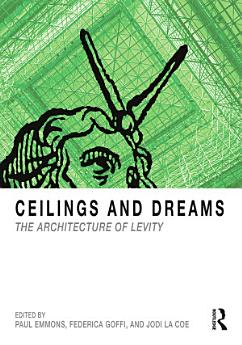Ceilings and Dreams: The Architecture of Levity
About this ebook
Ceilings and Dreams aims to correct this blind spot and encourages architects and designers, researchers and students, to look up through writings organized into three expansive categories: reveries, suspensions and inversions. The contributors contemplate the architecture of levity and the potential of the ceiling, once again, as a place for dreaming.
About the author
Paul Emmons is a registered architect; Associate Dean for Graduate Studies, College of Architecture and Urban Studies at Virginia Tech; and a professor at the Washington-Alexandria Architecture Center, where he coordinates the PhD program in Architecture + Design Research. Dr. Emmons earned a PhD from the University of Pennsylvania and a Master of Architecture from the University of Minnesota. His research focuses on theories of practice and drawing in architectural design. In addition to his forthcoming book Drawing Imagining Building: Embodiment in Architectural Drawing Practices, he is a co-editor of Confabulations, Storytelling in Architecture (2017) and The Cultural Role of Architecture (2012).
Federica Goffi is an Associate Professor (2007–present) and Co-Chair of the PhD program at the Azrieli School of Architecture and Urbanism at Carleton University in Ottawa, Canada. She holds a PhD from the Virginia Polytechnic Institute and State University. She published book chapters and journal articles on the threefold nature of time-weather-tempo. Her book, Time Matter[s]: Invention and Re-imagination in Built Conservation: The Unfinished Drawing and Building of St. Peter’s in the Vatican, was published by Ashgate in 2013. She holds a Dottore in Architettura from the University of Genoa, Italy. She is a licensed architect in her native country, Italy.
Jodi La Coe is an architect teaching at the Washington-Alexandria Architecture Center of Virginia Tech, where she earned a PhD in Architecture and Design Research. Her dissertation examines the exploration of space-time theories in the work of László Moholy-Nagy, informing his experimentation with photography and collage and, in particular, providing the basis for an original interpretation of his Partiturskizze zu einer mechanischen Exzentrik (Score-Sketch for a Mechanical Eccentric, c. 1924). La Coe received a Master of Architecture from McGill University in the History and Theory of Architecture (2000) and a Bachelor of Architecture from Penn State (1994) where she taught in the Stuckeman School of Architecture and Landscape Architecture (2003–14).








